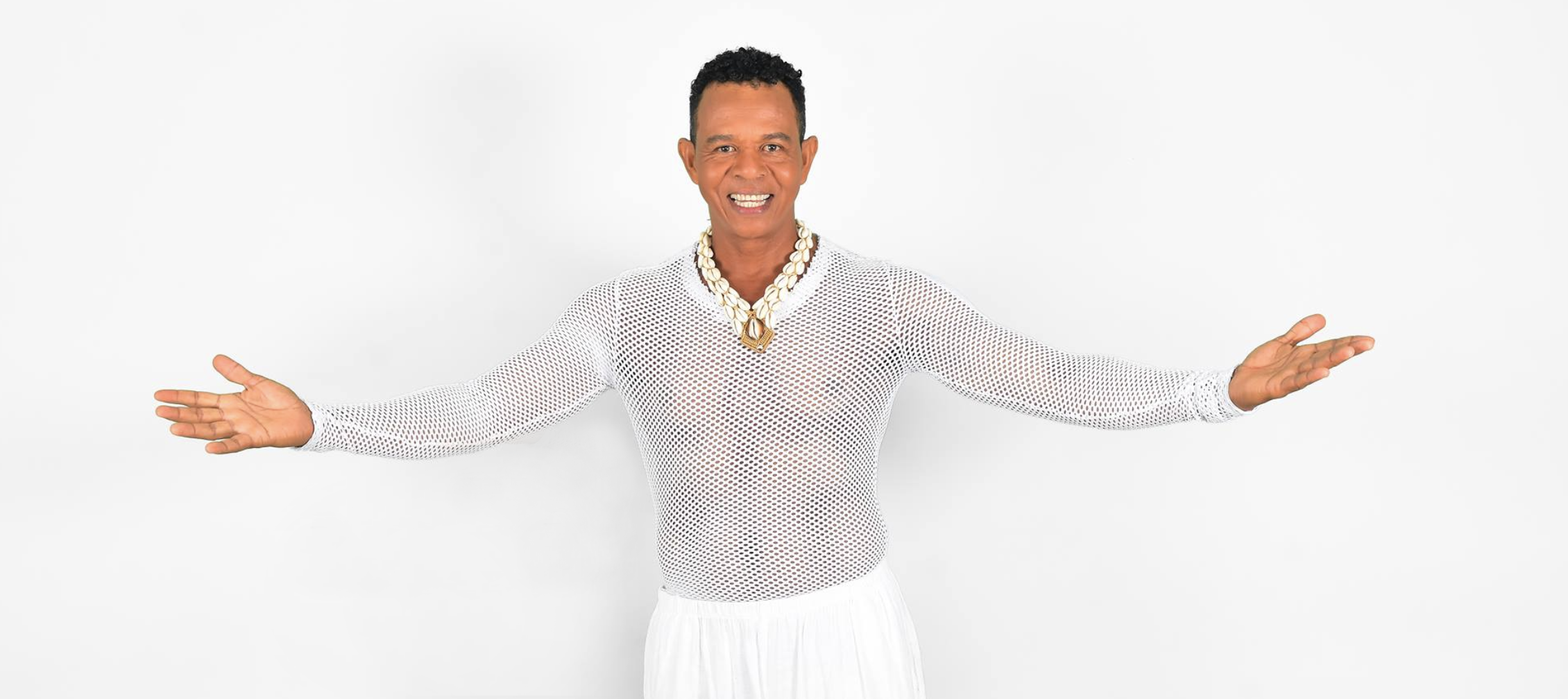Lambada Frequently Asked Questions
1. Please explain the terminology – why are there so many different names?
Lambada is the name that was given to a dance originally developed in Porto Seguro from earlier Brazilian and African dances. It was popularized worldwide through the success of music and dance performed by Loalwa Braz and the internationally successful Kaoma company – of which Master Braz and his brother Master Didi were members. ‘LambaZouk’, ‘Zouk Lambada’, ‘Lamba’ and ‘Neo Lamba’ are all recent names for modern Lambada. After Lambada music lost popularity and became scarce, people who loved the dance began to use Zouk music from the Caribbean which had a similar beat. Lambada began to develop into a variety of new styles, and some people began to refer to these evolutions as ‘Zouk’, but this upset dancers in Caribbean countries whose own dance was already called ‘Zouk’. So a cluster of innovative, Lambada-based dance styles came to be known instead as ‘Brazilian Zouk’. Like Lamba, Brazilian Zouk was developed from the root of Lambada, but over time it has evolved to be rather different (see below).
2. What’s the difference between Lambada/LambaZouk and Brazilian Zouk?
There are many similarities, because Brazilian Zouk comes from Lambada, but here are some notable differences:
In Lambada, you continue stepping the beat with your feet and never stop. In Brazilian Zouk you can stop your feet to play with body rolls, head movements and so on. In Lamba, head movements, body rolls and so on are executed as the feet continue to mark out the beat.
In Lambada, the music tends to be faster, with a strong beat. But Lambada can also be danced to medium or slow music.
In Lambada (especially in the Porto Seguro style), the hips tend to move more than they do in Brazilian Zouk. Figure-of-eight or side-to-side hip movements are important elements of many Lambada steps, with notable exceptions being during turns and spins.
There are many signature steps of Lambada (I have listed some below). Many were developed by Master Braz and his brother Master Didi, some come from other Brazilian or African dances. Many signature Lambada steps contribute to fun between couples on the dance floor, such as stealing and partner-swapping. Dancing with multiple partners is common in Lambada, and so is an emphasis on various kinds of turns and spinning.
For students who switch between Brazilian Zouk and Lambada, it is vital to pay attention to one’s center of balance, as these are different in the two dances. Generally, weight is pitched further back in Brazilian Zouk. If you try to follow Brazilian Zouk with a Lambada center of gravity you will tend to pitch forward and topple towards the leader. Instead, followers must be centered further back to allow for typical Zouk movements that are led with a paused foot.
3. What are some of the signature steps of Lamba?
Boneca (‘rag doll’) is a step created by Master Braz’ brother Didi, his partner Rebecca and partly developed by Braz himself. It primarily involves shoulder movements, so even though the arms may be rotated in a kind of ‘windmill’ fashion, both arm and head movements actually emanate from the shoulders. Styles of Boneca vary, so you will see very authentic, Porto Seguro styles from Braz, Didi, Josey, Bebe, and those who have developed the more African-based style. Those dancers who are European-based often perform Boneca in a more upright fashion with less ‘lilt’ in the mid-section or bending. Boneca can be danced in hold, or separate - led by ‘Wi-Fi’. To execute Boneca one must first have a firm grounding in basic steps, especially lateral and diagonal. For the follower, the opposite mirroring of the leader’s movements must be as exact as possible.
Chicote (‘whip’) Pronounced ‘shi-kotch’, this is a fairly sharp head movement led on certain accents in the music (usually ‘1’ or ‘5’). It is often taught preparing the head forward on ‘8’, thrusting back on ‘1’, then a slower return. But there are several musical moments when Chicote can be executed. There is specific accompanying footwork.
Wi-Fi. This stunning, advanced technique in which partners dance without physical contact – sometimes at a distance - gives the observer the impression that the lead and follow are happening by magic. But very solid, advanced technique is required, involving perfect concentration and exquisite following. Various types of Boneca, Chicote, and spins can be employed, as well as basic steps. Essential basic elements of Wi Fi are the Basic 1 step (stepping on the spot), the lateral Basic, and the front and back diagonal Basic step, plus Soltinho.
Soltinho. This is a step that travels in a circle, usually around a leader, and usually in a clockwise direction. There are variations in this movement, but the basic Soltinho is three steps forward starting on the right foot, then a three-step turn to the left with a side or diagonal step preparation on ‘5-6’ and the turn on ‘7’. This turn must always start and finish facing the leader. Soltinho is utilized in many Lambada situations – including during Wi-Fi, when a dancer is leading more than one follower, and as a staple style of a ‘Birthday Dance’.
Stealing. Lambadas love to steal each others’ partners. This becomes an exciting game on the dance floor and is thoroughly enjoyed by dancers and observers alike – but there are strict rules about how to correctly steal a follower from a leader (e.g. always keep the rhythm, and steal a follower from a leader’s right side, and steal a leader from a follower’s left side). For the follower, it is important to continue dancing with the first leader until it is very clear that the new leader has fully replaced the previous one. The follower never turns to face the robber until that moment – even if she would prefer to dance with him! In Brazil stealing can take on all kinds of flavors, from playful to quite aggressive. Leaders often enjoy resisting the challenge from a would-be robber (I have never seen Masters Braz or Didi be robbed unless they wanted it).
Partner Swapping. This is a common style of play on a Lambada dance-floor and it adds to the fun and skill of the dance. It is usually initiated by two leaders first making eye contact, then deftly swapping positions to dance with the other follower, always utilizing correct timing at the correct moment, and always maintaining rhythm. If there is a gap between leaders, the follower has choices: to continue the pattern initiated by the first leader, or segue into Soltinho or some creative turns - always keeping the beat and watching carefully for the new lead.
Multiple Partners. One Lambada leader can dance with one or more followers. Most common variation is one leader with two, three or four followers, although I believe Master Braz has achieved a world record by leading 53 followers (Buenos Aires Dance Congress). Advanced dancers may dance in a variety of combinations, such as two leaders with one follower. Sometimes one follower dances in the center of a circle (‘Roda’) of many leaders who take it in turns to dance with him or her. The most skilled Lambada leaders can employ different leads in each hand. For followers sharing a leader, Soltinho is a staple step, but other common steps are ‘Train’ in which dancers line up behind each other like a close conga line. From the Train they can be led to execute Boneca all together, Chicote, Cambre (backwards dip) and other advanced steps.
4. What time is Lambada danced on?
In an 8-count music phrase (in 4/4 signature time), the usual Lambada counts are ‘One Two Three…Five Six Seven’. BUT– and this is the tricky bit - there are two parts of most Lambada music that could qualify as ‘One’! Some people refer to this as ‘Dancing on One or Dancing on Three’, but this is not as clear cut as say, Salsa with its option for dancing on One or Two with specific patterns for each. Some very accomplished Lambada dancers flip-flop between dancing on One to dancing on Three during one dance. There are no hard and fast rules about this, which gives the freedom to express refined musicality within each particular song. Another important point is that even though the feet do not usually step on counts Four and Eight, other parts of the body may move on those counts, especially the hips.

